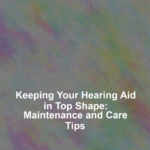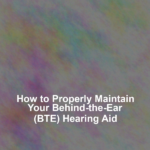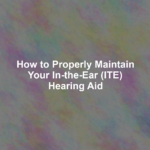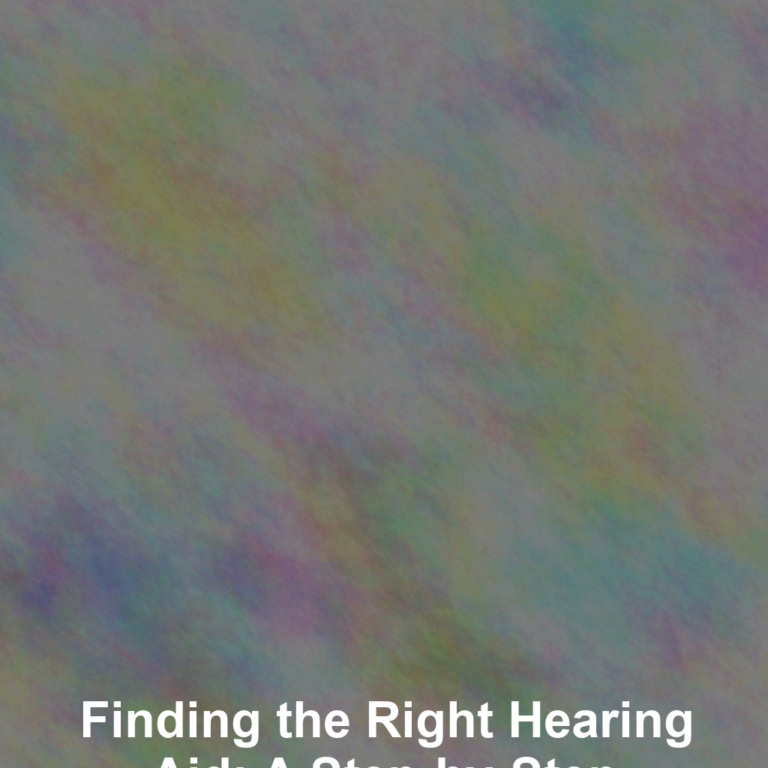Is it true that a well-maintained hearing aid can significantly extend its lifespan and improve its performance? YouG??ve likely invested both time and money into selecting the perfect hearing aid, so it makes sense to take the necessary steps to keep it in top condition.
From the daily cleaning routine that you shouldnG??t skip to the storage and handling tips that prevent unnecessary damage, there are specific, easy-to-follow practices that can make all the difference. YouG??ll need to understand how to manage batteries and power effectively to ensure your device is always ready when you need it, and you canG??t overlook the importance of troubleshooting common issues before they escalate.
WhatG??s more, knowing when to seek professional care and arrange for checkups could save you from future inconveniences. As you continue, youG??ll uncover the essential habits that will not only prolong the life of your hearing aid but also maintain its clarity and functionality, ensuring you stay connected to the sounds that matter most.
Daily Cleaning Routine
To maintain optimal performance, clean your hearing aid every day using a soft, dry cloth. Gently wipe the surface to remove earwax, dust, and debris that can muffle sound over time. DonG??t forget the microphone port and the receiver; these areas are crucial for clear audio transmission.
YouG??ll also need to check the earwax filter regularly, as it can become clogged. If you notice a drop in sound quality, itG??s likely time to change the filter. Most hearing aids come with a tool designed specifically for this task, so be sure to use it to avoid damaging the filter or the hearing aid itself.
Be careful not to use water, alcohol, or any other cleaning solvents. These can damage the delicate electronic components inside your hearing aid. If youG??re faced with stubborn grime, use a hearing aid cleaning spray, but apply it to the cloth first, never directly onto the device.
Storage and Handling Tips
When not in use, always store your hearing aid in a dry, cool place to prevent damage from moisture and extreme temperatures. ItG??s crucial to avoid bathrooms or other humid areas that could cause internal components to corrode. If youG??ve got a dehumidifier or a specialized drying container, use it to protect the delicate electronics within your device.
Handle your hearing aid with clean, dry hands to minimize the introduction of dirt and oils. Remember, your hearing aid is a sophisticated piece of technology, and rough handling can lead to unnecessary wear and tear. When youG??re not wearing it, donG??t just leave it lying around. Instead, place it in its protective case to safeguard it from dust, dirt, and potential accidents.
Before you go to bed, take a moment to open the battery compartment. This not only helps preserve battery life but also airs out the compartment, further reducing the risk of moisture damage.
Lastly, keep your hearing aid away from pets and children. Curious hands and paws can be unintentionally destructive. By following these simple storage and handling tips, youG??ll extend the life of your hearing aid and ensure it continues to function at its best.
Managing Batteries and Power
Ensuring your hearing aid has a reliable power source begins with proper battery management. You donG??t want to be caught off-guard by a dead battery, especially when you need your hearing aid the most. ItG??s not just about having spare batteries on hand; itG??s about knowing how to extend their life and when to replace them. HereG??s how to stay powered up:
-
Turn off your hearing aid when not in use. Even when idle, a hearing aid can drain battery power. Make it a habit to switch it off to conserve energy.
-
Store batteries at room temperature. Extreme temperatures can affect battery performance and lifespan. Keep them in a cool, dry place to maintain their efficacy.
-
Check the battery regularly. Using a battery tester can help you determine how much life your batteries have left. This way, youG??ll know when itG??s time for a fresh one.
-
Dispose of batteries responsibly. When your batteries are spent, make sure to recycle them properly. Many stores and hearing care providers offer recycling programs.
Troubleshooting Common Issues
While managing battery life is key to maintaining your hearing aidG??s power, itG??s equally important to know how to address the deviceG??s common operational issues. If your hearing aid isnG??t working, first check if the battery is inserted correctly and if itG??s not depleted. Sometimes, simply opening and closing the battery compartment can reset your device.
If thereG??s no sound or if itG??s distorted, inspect the earwax filter or wax guard; it might be clogged. You can clean or replace it according to the manufacturerG??s instructions. Make sure the microphone and speaker ports are clear of debris too.
When youG??re experiencing feedback or whistling sounds, ensure that the hearing aid fits snugly in your ear. A poor fit can cause sound to escape and re-enter the microphone. If adjusting the fit doesnG??t help, the earmold may need professional cleaning or resizing.
If the device seems dead, donG??t assume the worst. Sometimes moisture can interfere with functionality. Dry it out with a dehumidifier or drying kit overnight. If problems persist, consult your audiologist or hearing aid specialist. They can diagnose the issue and perform repairs or recommend further steps. Remember, regular maintenance can prevent many of these issues from occurring in the first place.
Professional Care and Checkups
Regular checkups with a hearing care professional are crucial to keeping your hearing aid in optimal condition. You wouldnG??t skip a service for your car; similarly, you shouldnG??t neglect the device that enhances your hearing. HereG??s why itG??s essential to have a professional look at your hearing aid regularly:
-
Expert Cleaning: While youG??re diligent about daily cleaning, a professional can thoroughly clean areas you canG??t reach, removing any stubborn build-up that might affect sound quality.
-
Performance Calibration: Your hearing might change over time. A professional can adjust your hearing aidG??s settings to ensure itG??s perfectly tuned to your current needs.
-
Preventative Maintenance: Pros can spot signs of wear and tear that you might miss, preventing minor issues from becoming bigger problems.
-
Software Updates: Just like your smartphone, your hearing aid may need updates. A professional can install the latest software, ensuring youG??re getting the best possible experience.
Conclusion
Taking care of your hearing aid is crucial for optimal performance. Remember to clean it daily, store it properly, and handle it with care. Keep an eye on battery life and replace them as needed. If you run into issues, follow troubleshooting steps or consult a professional.
Regular checkups will ensure your device is in top shape. By following these simple steps, youG??ll extend the life of your hearing aid and enjoy clearer hearing every day.










